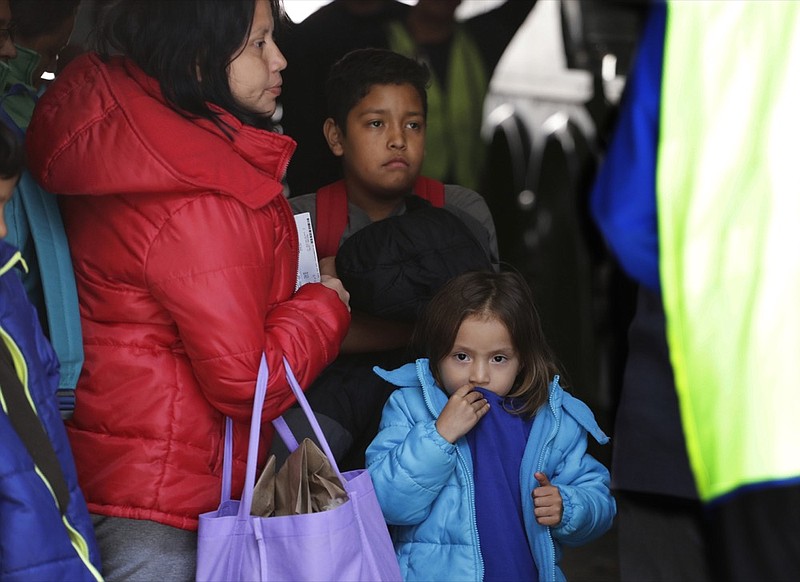Thousands of immigrants from Guatemala, Honduras and El Salvador continue to trek to our southern border because of violence and extreme poverty, which their governments have largely been unable to address. Global warming, which increasingly affects agriculture in mountainous regions of Central America, is a further factor in the region's worsening poverty.
Since 2017, total U.S. governmental aid to the three countries has been sharply cut. Guatemalan assistance dropped from $257 million to $24 million in 2019. Honduran aid fell from $181 million to $49 million in the same period. Aid to El Salvador dropped from $118 million to $18 million. Are we punishing those nations because of their problems?
We can ignore the plight of 31 million people in those countries, build a wall across the U.S.-Mexican border, and refuse to address petitioners who seek political and economic asylum in our country.
Alternatively, we could devise a program of aid modeled after the post-World War II Marshall Plan. Former San Antonia Mayor and HUD Secretary Julian Castro has advocated this approach but without providing details.
In an address at Harvard University in April 1947, Secretary of State George C. Marshall proposed a program for rebuilding nations devastated by the war. Congress approved the plan with overwhelming, bipartisan support. President Truman signed the measure into law on April 3, 1948.
Over three years, the U.S. disbursed $12 billion ($125 billion in today's economy) toward the rebuilding of 16 Western and Southern European nations. The United Kingdom, France and West Germany received more than half of the aid. Loans and private investments supplemented those funds. A specially created European Cooperation Administration within the State Department worked closely with the Committee on European Economic Cooperation to determine how the aid could best be applied. The CEEC evolved into the Organization of European Economic Cooperation. Unified planning coupled with financial and technical assistance helped restore manufacturing, transportation, agriculture and financial stability across borders. The U.S. government provided less than a quarter of reconstruction funds. Importantly, the Marshall Plan provided coordination among donors and recipients to assure maximum effectiveness of the overall program.
By the conclusion of the Marshall Plan in 1952, gross domestic product of participating European nations had increased by 15 to 25 per cent. Public institutions had been stabilized and democratic principles strengthened.
Is a Marshall Plan for Guatemala, Honduras and El Salvador feasible? The odds are against it.
First, Congress would have to put aside partisan rancor and agree on the design and funding for the plan. Anti-immigrant and nationalist factions would vigorously oppose such aid. Assuming the legislation passed and was signed by the president, a designated authority, such as the U.S. Agency for International Development, would assume responsibility for planning and executing a multi-year program.
Next, the three countries would have to agree to the formation of a regional authority that would work closely with USAID in monitoring and carrying out the various programs. Consider public safety. If police are ineffectual in combating crime, experts from the U.S. would provide training for local and regional forces. Success of any program would depend upon mutual trust, which would take time to develop.
Agricultural assistance would face challenges caused by drought, soil erosion, and deforestation. Years would be required to restore stability and productivity.
This complex, multi-layered proposal raises a series of questions: Is there a moral dimension to U.S. policy toward other countries? Or is our international policy based solely upon self-interest? Should we simply write off millions of people facing futures with no hope? Given the difficulties, could the U.S. work with failing nations of Central America to fashion a new, more hopeful future?
The Marshall Plan represents an ideal that should be revisited by our elected representatives and leaders. We cannot abandon our neighbors to the South.
Contact Clif Cleaveland at ccleaveland@timesfreepress.com.

